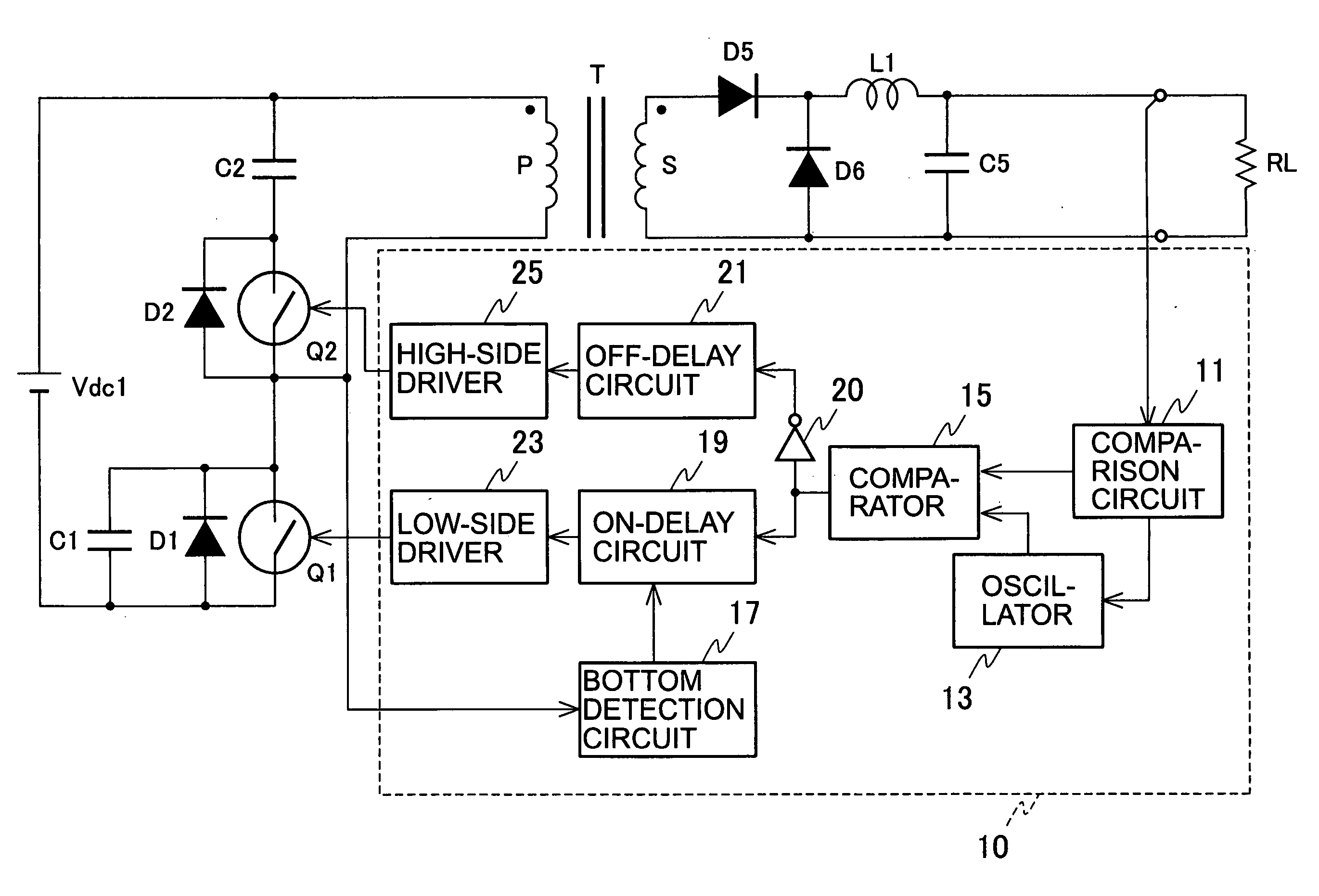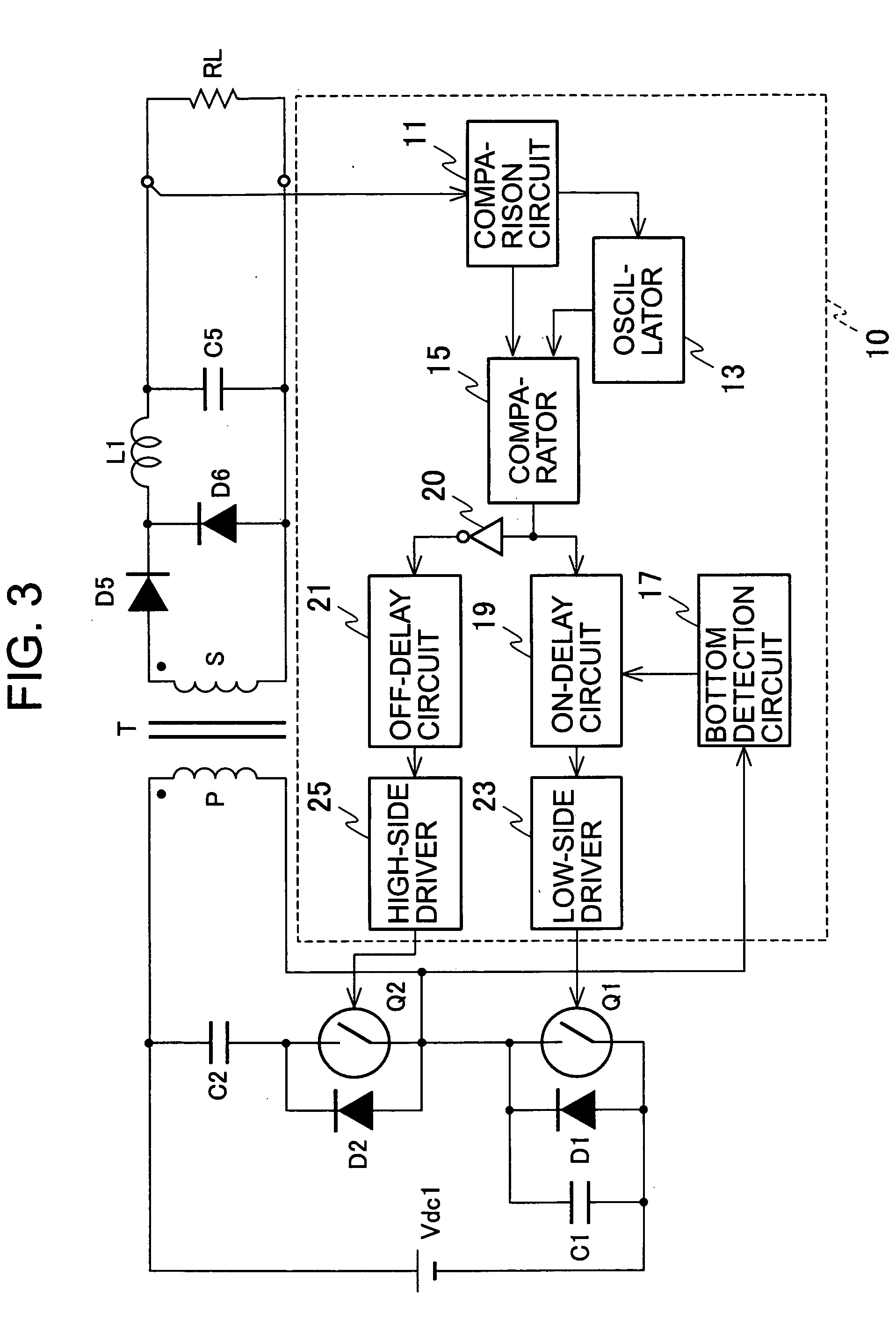Direct-Current Converter
a converter and direct current technology, applied in the direction of electric variable regulation, process and machine control, instruments, etc., can solve the problems of complex enabling control circuits and loss of switching, and achieve the effect of reducing power consumption and reducing switching losses of main switches
- Summary
- Abstract
- Description
- Claims
- Application Information
AI Technical Summary
Benefits of technology
Problems solved by technology
Method used
Image
Examples
first embodiment
[0033]FIG. 3 is a circuit diagram of a direct-current converter according to the first embodiment. The direct-current converter shown in FIG. 3 uses a so-called active clamp scheme. In the converter, a main switch Q1, including MOSFET or the like, is connected to a direct-current power supply Vdc1 through a primary winding P (winding number: n1) of a transformer T, and a series circuit including an auxiliary switch Q2 made of MOSFET or the like and a snubber capacitor C2 is connected to both ends of the primary winding P. Note that the series circuit including the auxiliary switch Q2 and the snubber capacitor C2 may also be connected to both ends of the main switch Q1 instead of both ends of the primary winding P.
[0034] A parallel circuit including a diode D1 and a capacitor C1 is connected to both ends of the main switch Q1. A diode D2 is connected to both ends of the auxiliary switch Q2. The diode D1 may be a parasitic diode of the main switch Q1 and the diode D2 may be a parasit...
second embodiment
[0064] Next, a direct-current converter according to the second embodiment is described. The direct-current converter of the second embodiment is characterized in that a value of an inductance of a reactor serially connected to a primary winding of a transformer T is increased, and that an auxiliary transformer is provided which causes a reflux of energy, stored in the reactor when the main switch Q1 is turned on, towards the secondary winding side.
[0065]FIG. 12 is a circuit diagram showing the direct-current converter according to the second embodiment. The direct-current converter according to the second embodiment shown in FIG. 12 differs from the direct-current converter according to the first embodiment shown in FIG. 3 in the transformer T and peripheral circuits of the transformer T. Therefore, only these parts are described.
[0066] In this example, an auxiliary transformer is combined with a transformer Tb, and the primary winding P (winding number: n1, also serving as the p...
PUM
 Login to View More
Login to View More Abstract
Description
Claims
Application Information
 Login to View More
Login to View More - R&D
- Intellectual Property
- Life Sciences
- Materials
- Tech Scout
- Unparalleled Data Quality
- Higher Quality Content
- 60% Fewer Hallucinations
Browse by: Latest US Patents, China's latest patents, Technical Efficacy Thesaurus, Application Domain, Technology Topic, Popular Technical Reports.
© 2025 PatSnap. All rights reserved.Legal|Privacy policy|Modern Slavery Act Transparency Statement|Sitemap|About US| Contact US: help@patsnap.com



